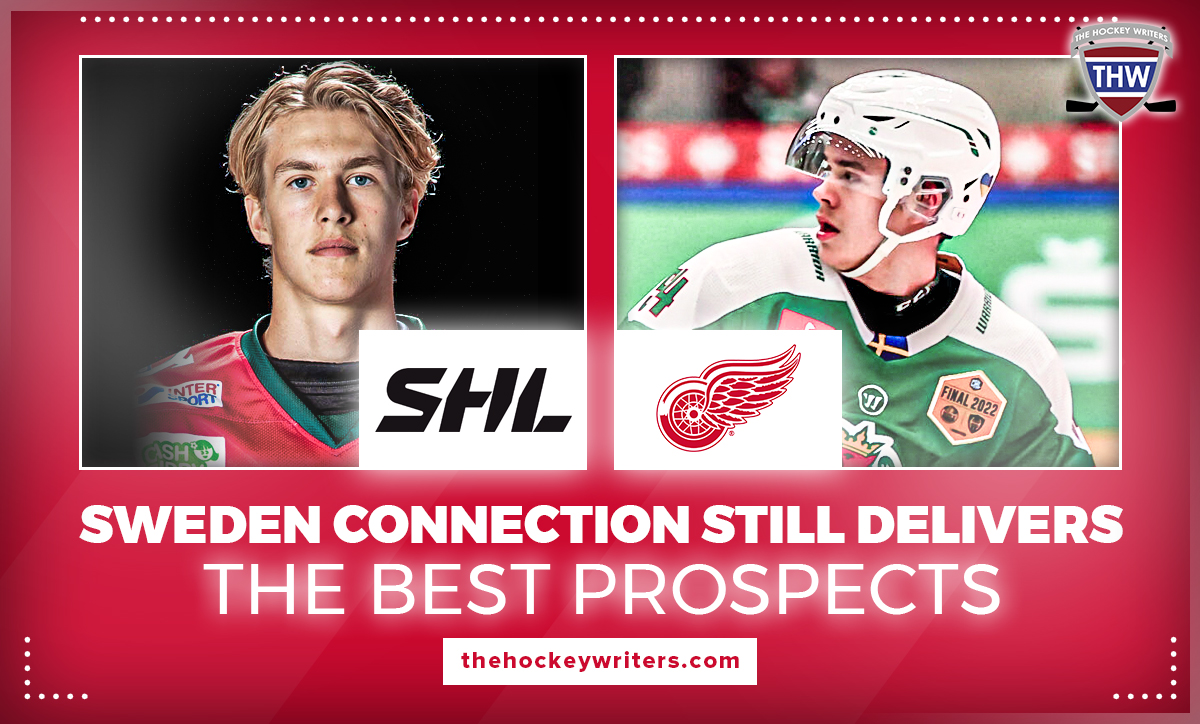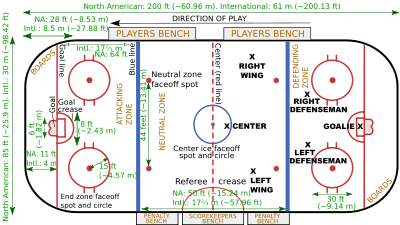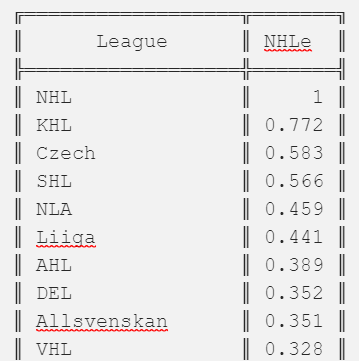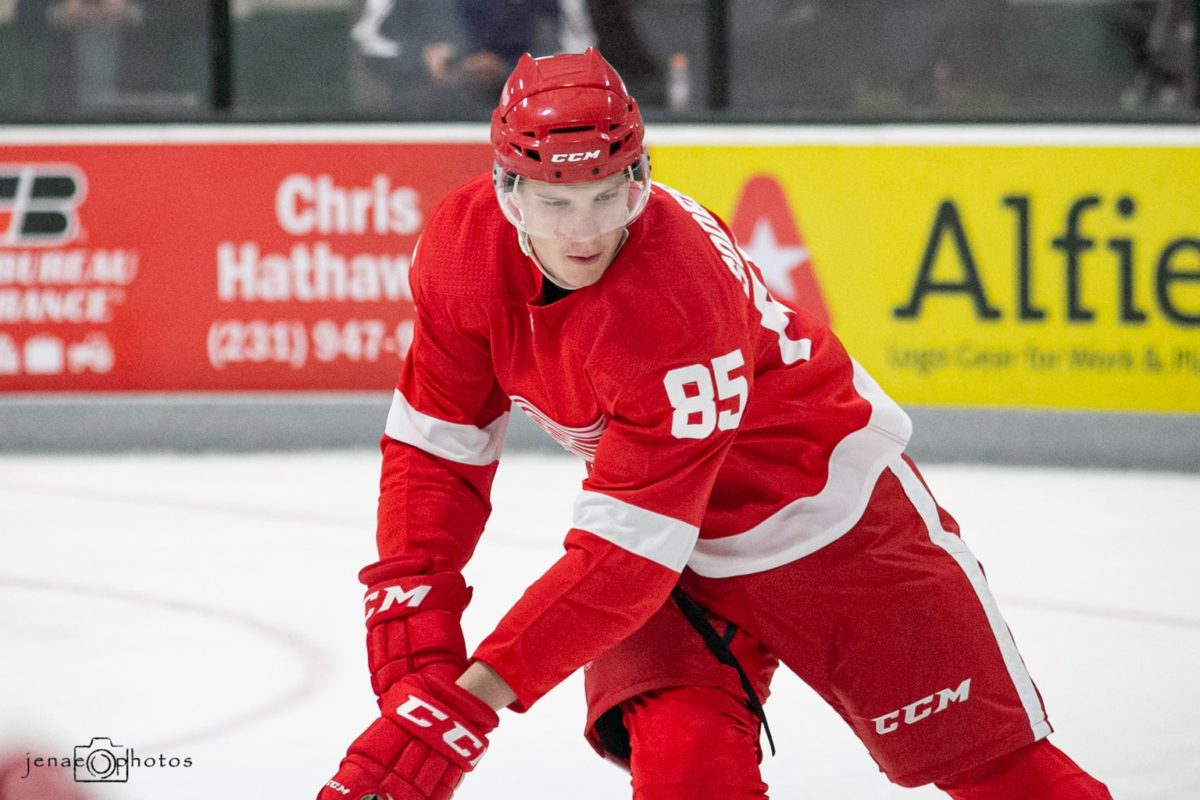The Swedish Hockey League (SHL) is one of the most competitive hockey leagues in the world, falling right behind the NHL. This being said, it is the best environment for prospects to round out their game before heading up to the NHL level of play. Other major hockey leagues that serve as a similar stepping stone are the American Hockey League (AHL) and the Kontinental Hockey League (KHL). So, what makes the SHL stand out, especially regarding Detroit Red Wings prospects?

There are 14 teams in the SHL spanning across Sweden with the most recognizable to Wings fans being Frolunda HC and Rogle BK which produced talents such as Moritz Seider and Lucas Raymond. Out of all of the current Red Wings prospects in the system, 19 are European, while 21 are North American. Four prospects play in the SHL; Theodor Niederbach, William Wallinder, and Marco Kasper with Rogle BK and Liam Dower Nilsson with Frolunda HC.
Crunching Numbers
The speed and size of the SHL game is very comparable to that of the NHL. In the SHL, the ice measures 30 by 60 meters (98.42 feet by 196.85) for a total surface area of roughly 18,701.86 feet squared. North American ice is slightly smaller at 85 by 200 feet, with an approximate surface area of 16,327 feet squared. Not that this is a monumental difference in terms of gameplay, but players coming out of the SHL know how to navigate big sheets of ice with speed, helping their game translate to the NHL a bit smoother.

Each SHL season consists of 52 games played in a round-robin format. When compared to the 82-game NHL season, it seems very short, but since there are only 13 other teams for each team to play, it adds up. The AHL is the second longest season out of these four leagues, with 72 games played between 32 teams. Lastly, the KHL is composed of 22 teams, with each team playing 56 games. The length of the season is important to note but does not take away from the competitiveness of the respective leagues.
One way to look at how the leagues stack up would be to reference the NHL Equivalency Model (NHLe). This model, first brought to light by Gabriel Desjardins and then polished off by numerous sources, including Patrick Bacon and CJ Turtoro, gives a point in any league around the world a value on the scale of one NHL point based on how players have historically scored. To calculate this for an individual player, you would calculate how many points per game the player scored and multiply that by the equivalency for the respective league. Then, multiply that number by the number of games in the NHL season (82) to reach the final NHLe.

Now, to determine which league is the best stepping stone to the NHL, this model is a great tool to use. I find it safe to assume that non-Russian prospects are typically coming out of the SHL and AHL, while Russian prospects come out of the KHL- so the SHL and AHL are most relevant in terms of the vast majority of prospects. On a scale of one NHL point, the KHL is equivalent to 0.772, the SHL is 0.566, and the AHL is at 0.389. So for the majority of prospects, the NHLe model suggests the SHL is the best springboard into the NHL based on the equivalencies.
European Scouting: The Key to Success
It may now be established that Steve Yzerman seems to favor European prospects over those from North America. A major part of that bias may be the scouts that he works with, such as Håkan Andersson. Andersson is the Director of European Scouting for the Red Wings and has been with the organization since 1990. He is the person to thank for the continued success of Swedish players in Detroit, including playing a role in drafting Nicklas Lidström.
Related: Red Wings’ Håkan Andersson – From Fishing Guide to Scouting Guru
On top of collecting a posse of talented Swedes, another claim to fame for Andersson is his knack for finding late-round gems. Most famously, he is known for taking Pavel Datsyuk in the sixth round of the 1998 NHL Draft at 171st overall. Having a scouting director such as him in the Red Wings organization has been key to getting the team through tough times where they lacked any premium draft picks but still needed to build a team. Even though the Red Wings have had more of these premium or higher round picks as of late, there is a fair amount of time devoted to looking at those players who aren’t ranked as high up in the draft projections.
The Sweden-Detroit Connection
Part of what makes me think that the SHL is the perfect “prep step” for the NHL is the quality of prospects that come out of it. From the two superstar rookies of the 2021-22 season to those in the upcoming season, the talent coming from this league is undeniable. Let’s take a look at some of the recent prospects that have turned heads in the Red Wings world.
Moritz Seider
Seider spent his 2020-21 season with Rogle BK of the SHL on loan from the Red Wings after having played with the Grand Rapids Griffins of the AHL the season prior. Going from the AHL to the SHL is an interesting path, but it evidently set him up for a successful rookie season in the NHL. While playing for Rogle BK, he was not only named the SHL defenseman of the year but also continually shut down some of the top players in the league.
“In the playoffs against that team [Frolunda HC], and a guy like Joel [Lundqvist] wants to get his team going and he tries to take some extra physicality against Mo — yeah, it stuck out to me, too, and everybody else,” Cam Abbott, the coach, said. “He decided at that point that he would physically dominate Joel and the rest of that team in that series.”
– Max Bultman, “Inside Moritz Seider’s season with Rögle, where saunas, dancing and hard hits reigned,” The Athletic, 9/22/21
His time in the SHL built up the confidence Seider was developing in North America both on and off of the ice. The confidence to play a remarkably physical game against respected veterans twice his age and be himself in the locker room and bolster team chemistry with a smile came to him in Sweden. Playing in the AHL was a great start for 18/19-year-old Seider, but the SHL is what polished him off to be the future Calder winner of the 2021-22 NHL season.
Simon Edvinsson
Looking to fight his way into a roster spot for the 2022-23 season, Simon Edvinsson is one of the most recent stars pulled out of the SHL. Drafted 6th overall in the 2021 NHL Draft, the 6-foot-6 defenseman played 44 games for Frolunda HC this past season carrying a plus-13 rating. He is likely to join the Red Wings’ blue line this fall as he’s coming off of yet another impressive season. With silky mitts and smooth strides, he is able to cover the defensive zone with ease and translate his style of play to the offensive zone. Two-way defensemen are a hot commodity in the draft market as of late, and this Swede is a pretty sweet addition to the Red Wings’ prospect pool.
With just one full SHL season under his belt and seeming to be NHL-ready, Edvinsson is a great example of how this league is the best stepping stone. He has had an opportunity to utilize his hockey IQ against veteran opponents while continually developing his puck handling and defensive abilities. His style of play will have a rather seamless transition to the NHL level since he has been playing at a similar level in Sweden. Similar to Seider just over a year ago, Edvinsson is squared up to make a monumental difference for the Red Wings’ defense.
Elmer Soderblom
Now, this player is the true definition of a hidden gem who was dug up by Andersson and the other Red Wings scouts. Elmer Soderblom was a sixth-round pick in the 2019 NHL Draft and has proven to be an absolutely solid pick for the Red Wings. There is the general perception that late-round picks are more unlikely to pan out for the NHL, but being able to develop in the SHL over the past three seasons has put him in the position of being on the brink of the Red Wings roster.

It is not every day that you see an absolutely massive forward that can put up goals with not just brute force, but skillful finesse. Soderblom led Frolunda HC in goals this past season and ended up in a four-way tie for the most goals across the SHL with a whopping 21. From goal scoring, to stick handling, to overall hockey IQ- having a prospect like him in the Red Wings’ system is huge for the future of this team. Albeit, he might end up with the Grand Rapids Griffins for a season or two to strengthen some aspects of his game, he is another undeniable talent produced by the SHL that is going to look great in Detroit.
Speculation Station: Where Should Kasper Play?
There was faint chatter surrounding where Marco Kasper will be spending his 2022-23 season. Recently, he confirmed that he will be playing with Rogle BK of the SHL and shut down the rumor about him heading to the Ontario Hockey League (OHL). So, why is staying in the SHL significantly better for his development as a player in terms of NHL preparedness?
Firstly, the OHL is a few steps behind the SHL in terms of the level of play and competitiveness. The OHL is a great league nonetheless, coming in at number 10 in the “Top 10 Best Ice Hockey Leagues” ranking, but it just is not quite the sweet spot for Red Wings prospect development currently. There are three Red Wings prospects currently playing in the OHL, including Amadeus Lombardi, Tnias Mathurin, and Pasquale Zito; yet none of them are likely to be posting a case for an NHL roster spot anytime soon. Playing in the AHL or SHL allows a player such as Kasper to play against a higher caliber of veteran opponents; which better prepares them for what they would see at the NHL level.

Circling back to the NHL Equivalency Model, let’s see how Kasper would fare in each league. In the 2021-22 SHL season with Rogle BK, Kasper put up 11 points (seven goals, four assists) through 46 games which is 0.24 points per game played. Using the SHL equivalency score of 0.57 would translate to 11 NHL points. Say that Kasper had played the same exact season with number of games and points, but in the OHL, using the OHL equivalency score of 0.14 would only be a NHLe of two points. This is by no means an exact prediction of how playing in each league would set him up for NHL success, but it is definitely intriguing to look at.
Ultimately, there is no certain or defined best step before the NHL, but the SHL puts up a pretty good case for why it deserves that title. Specifically, when you look at the Red Wings, some of the best players in franchise history have come from playing hockey in Sweden. Nicklas Lidstrom and Henrik Zetterberg both played in the Swedish Elite League (now the SHL) and seemed to have set a precedent for that league going forward. Red Wings’ European scouting behind Andersson has given the prospect pool much-needed talent depth, especially in recent years. Going forward, scouts and fans alike will be keeping a keen eye on Swedish prospects and others playing in the SHL. The Sweden-Detroit prospect pipeline is truly one to be rivaled.